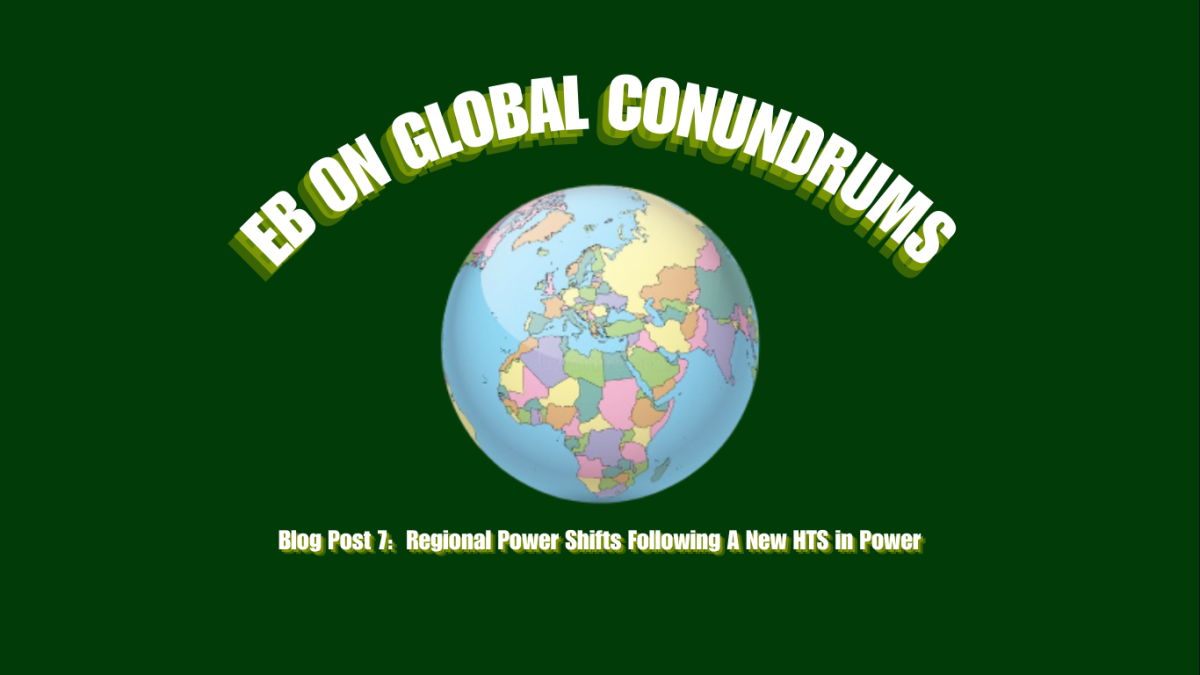The toppling of Syria’s Assad regime, which lasted over a half a century, took place on Dec 8. Under Assad, Syria was ruled by an autocratic regime dominated by the minority Alawite sect (a heterodox offshoot of Shia Islam,) which had strong ties with Iran, a Shia state.
And now, Hay’at Tahrir Al Sham (HTS,) a Syrian Sunni Islamist group, which led the rebel offensive that ousted Assad, is at the helm of a new regime in the making. With the coming to power of HTS’s, the balance of power across Syria’s bordering states and in the broader Middle East have already begun to shift, leaving some states in a better or worse position.
Ultimately, there are two major losers with this power shift in Syria, as well as two major winners who will likely compete for greater influence in Syria and abroad.
The two states, which have endured the most losses are Russia and Iran, as they have lost decades old influence in Syria and the region. The winners are Turkey and Israel, both of which will compete for Syrian and regional influence, with each state having to navigate through their respective constraints.
Regarding Russia’s loss, Syria’s fallen regime was supported by Moscow. And with the fall of said regime, Russia has lost its only major outpost in the Middle East. Furthermore, Moscow has earned a reputation for being unable to support its allies against enemies.
Additionally, the Kremlin’s past efforts to preserve the Assad regime have ultimately gone to waste and cannot be regained. This includes investments and manpower, though a solid figure of their economic losses is yet to be calculated.
Shifting to Iran, their losses are a little more dire to their sphere of influence considering the proximity. They have also faced decreasing influence in Lebanon with the weakening of their proxy, Hezbollah.
One must note that Iran is an ideologically Shia Islamist state, surrounded by Sunni Arab nations, with Syria now being added to that list of Sunni states. Iran has majorly lost influence in Syria, which they once had under Syria’s Assad regime, leaving them to cling onto and protect their remaining hold in Iraq, a majority Shia state. However, there is a notable Sunni minority in Iraq which now has room to become empowered, causing unease for the Iraqi government as well as Iran.
Moving on to the regional winners, Turkey and Israel have kept close diplomatic ties in the past. However, Syria will serve as an arena for both states to compete for influence.
Israel’s largest constraint in this competition is the threat of attacks from Sunni Jihadist groups, (as it has faced from Hamas and Hezbollah Previously.)
Israel’s largest asset, however, is its occupation of the Golan Heights, Syrian territory along the border between the two countries. And as the Assad regime was crumbling, Israel added to this buffer zone with an additional 155 square miles. Israeli moves are at odds with Turkey’s interests to install a Turkish-friendly government in Damascus – a critical step towards its ultimate goal of becoming the regional hegemon. Ultimately, Israel is in a bit of a quandary as they cannot afford for Syria to be ruled by Sunni Islamists as that poses threats for their national security. But they also cannot afford for Syria to be in a state of anarchy, as that will pose a threat to their hold in the Golan Heights through a possible spillover.
For Turkey, their largest constraint is the Kurdish-dominated Syrian Defense Forces (SDF) as they control large amounts of territory of Syria’s north and northeast, extending to the border between Syria and Turkey. Though the SDF does not control the entire northern border, as Turkey holds a small strip between their border and the SDF’s overall block of territory.
Additionally, the Syrian Kurds are close allies of Turkey’s Kurdish rebel movement, separatist insurgents who have been at violent odds with the Turkish government since the 1980s. Together, Kurdish separatists within Turkey and in Syria represent a major national security challenge for Ankara.
The SDF is also backed by the United States, although Washington has shown to be stingy with how many resources it wants to commit to supporting the SDF. The incoming Trump Administration will likely see even lesser interest in support for this group given the president-elect’s “America First” vision.
SDF’s control over large amounts of Syrian territory represents a key obstacle for Turkey’s aims of gaining influence in Syria and the broader region.
All in all, Turkey would benefit from pushing SDF out of Syria’s northern region, and allowing for HTS or other Sunni groups to take power as they will be more aligned with Ankara ideologically and politically.







